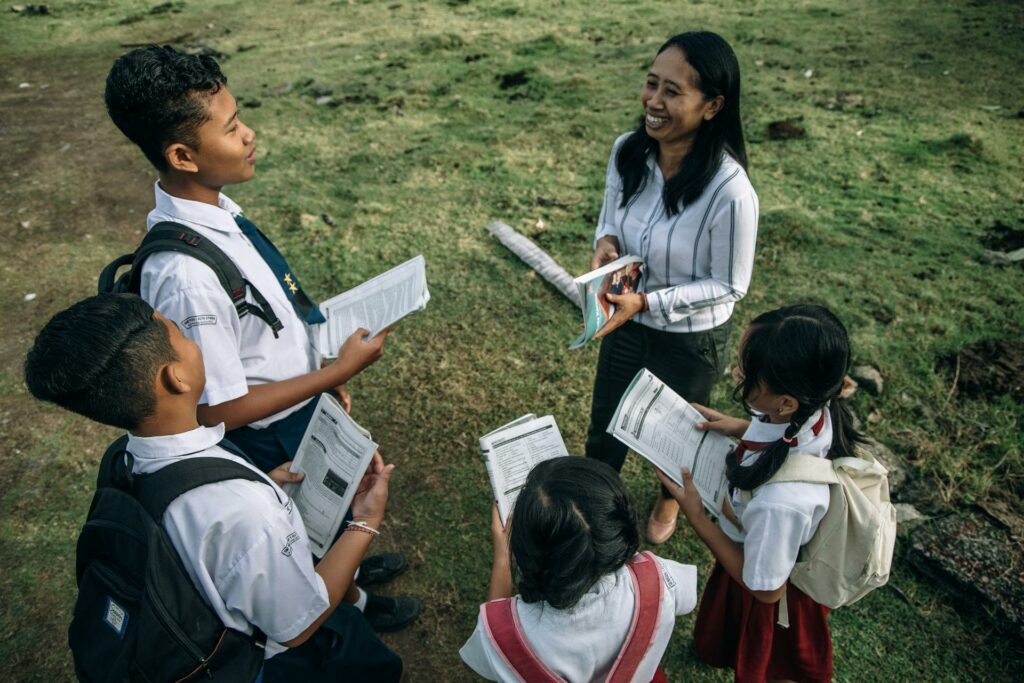In today’s fast-paced, digitally-driven world, education must extend beyond the confines of the classroom. While traditional learning has its place, educational outings offer students a dynamic and enriching experience that cannot be replicated within four walls. These outings, often referred to as field trips or school excursions, allow students to engage with their environment in a hands-on way, fostering deep learning and curiosity. This blog will explore the benefits of educational outings for students and why schools should make them a regular part of the curriculum.
For more information on how Open Minds Campus integrates educational outings into their programs, visit our website here.
What are Educational Outings?
Educational outings are excursions that schools organize to give students the opportunity to experience learning in an environment outside the classroom. These outings can include visits to museums, science centres, historical landmarks, zoos, nature reserves, factories, and even international trips. The key is that the destination has a clear educational purpose and allows students to connect theoretical knowledge with real-world experiences.
The Benefits of Educational Outings for Students
1. Enhanced Learning Experience
Educational outings provide a multi-sensory learning experience that can stimulate interest and reinforce classroom lessons. For example, a trip to a science museum brings abstract concepts like physics or chemistry to life, allowing students to interact with exhibits and perform experiments. By seeing and experiencing the subject matter firsthand, students are more likely to retain information and understand it on a deeper level.
2. Increased Engagement
Students often find learning through educational outings more engaging than traditional methods. This is particularly beneficial for students who may struggle with conventional learning approaches. These students, who may not excel in classroom-based settings, often thrive in hands-on environments where they can explore, touch, and see what they are learning about. This shift in learning modality can reignite their interest in a subject, making them more enthusiastic about education as a whole
3. Real-World Connections
One of the greatest advantages of educational outings is their ability to connect classroom lessons with real-world applications. A visit to a botanical garden, for instance, can teach students about ecosystems, plant biology, and environmental conservation in a tangible way. This kind of learning deepens students’ understanding and shows them the relevance of what they are learning in their everyday lives. When students see the importance of their studies in the real world, they are more likely to appreciate and engage with the subject matter.
4. Development of Social Skills
Educational outings provide a perfect platform for students to develop social skills. Unlike in a classroom setting, students are often given the freedom to explore and collaborate in a more informal and relaxed environment. This encourages teamwork, communication, and problem-solving skills, as they work together to navigate new experiences. Such opportunities also help students build relationships, which are key to emotional development and a positive school experience.
5. Cultural Exposure
Educational outings, especially those that take place in different cities or countries, expose students to diverse cultures and perspectives. Whether visiting historical landmarks, experiencing traditional music, or engaging with local communities, students gain a deeper understanding of cultures other than their own. This exposure fosters empathy, broadens horizons, and nurtures a sense of global citizenship.
6. Critical Thinking and Problem-Solving
When students are outside the classroom, they are often faced with new and unfamiliar situations that require quick thinking and adaptability. Whether it’s finding their way around a museum, interpreting exhibits, or solving challenges during outdoor activities, educational outings can enhance students’ problem-solving skills. These experiences encourage critical thinking as students navigate and analyze information in real-time.
7. Long-Lasting Memories
The experiences gained through educational outings tend to leave a lasting impact. Students often remember these trips for years, and the lessons learned are ingrained because they are tied to specific experiences. These memories serve as milestones in a student’s educational journey, giving them something tangible to look back on as they reflect on their learning progress.
8. Physical Activity and Well-Being
Many educational outings, particularly those that involve nature walks, hikes, or physical exploration, provide students with the chance to be active. This is a refreshing break from the physically inactive nature of classroom learning and can improve students’ physical health and mental well-being. Physical activity is known to enhance concentration, reduce stress, and improve overall mood, making students more receptive to learning.
How to Plan a Successful School Outing
Planning an educational outing requires attention to detail to ensure that the experience is safe, meaningful, and educational for all students. Here are a few steps to consider:
- Choose a Relevant Location: The outing should align with the curriculum and offer a clear educational purpose. Consider places that will complement the subjects being taught in class.
- Set Clear Objectives: Determine what students should learn or achieve by the end of the trip. This will help guide the activities and ensure the trip is productive.
- Logistics and Safety: Ensure all safety measures are in place, including transportation, supervision, and any necessary permissions. Keep a ratio of chaperones to students to ensure everyone is accounted for.
- Pre-Trip Preparation: Prepare students for the outing by giving them background information and explaining the relevance of the destination to their current studies.
- Post-Trip Reflection: Allow time for students to reflect on their experiences through discussions, projects, or written reports. This helps solidify what they learned during the outing.
Frequently Asked Questions
What are the advantages and disadvantages of field trips?
Field trips offer several advantages, such as enhanced engagement, real-world learning, and social skill development. However, they can be costly, require detailed planning, and may pose challenges with safety or student supervision.
How do you plan a school outing?
Planning involves selecting a relevant destination, setting learning objectives, arranging logistics and safety, preparing students beforehand, and organizing post-trip reflection activities.
What are the objectives of school excursions?
The objectives vary depending on the subject matter but generally include reinforcing classroom learning, providing real-world experiences, and fostering personal growth through social interactions and problem-solving.
What is the excursion method of teaching?
The excursion method involves learning through external experiences that support theoretical knowledge. It emphasizes hands-on learning and encourages students to explore new environments to gain deeper understanding.
For more information on how educational outings can enrich your child’s learning experience, visit Open Minds Campus.



